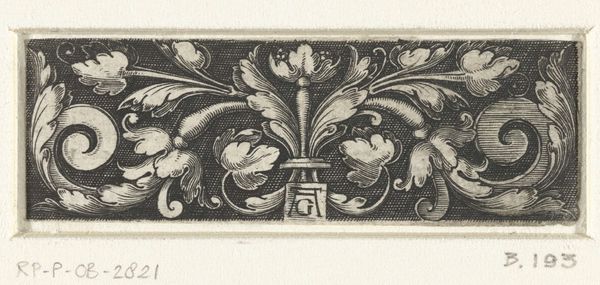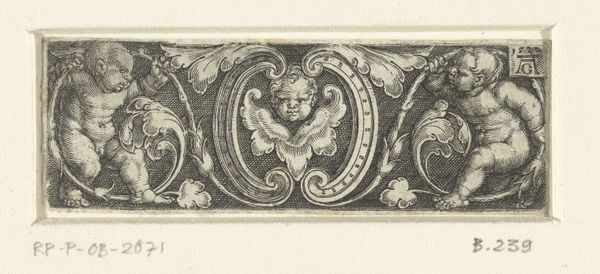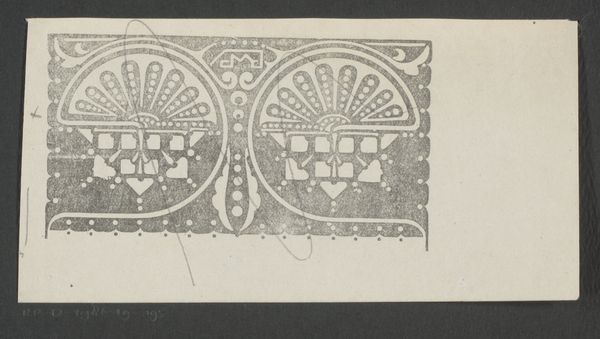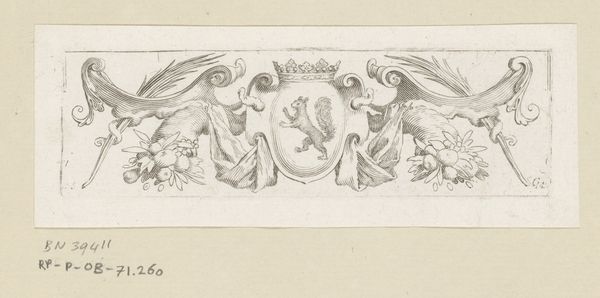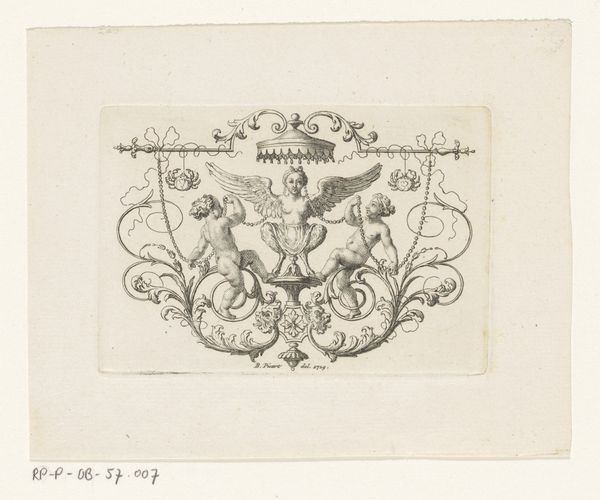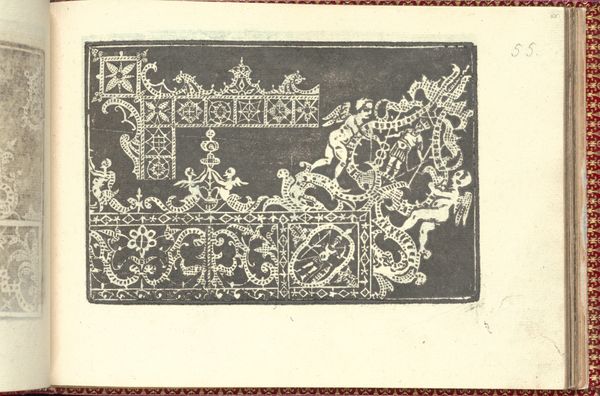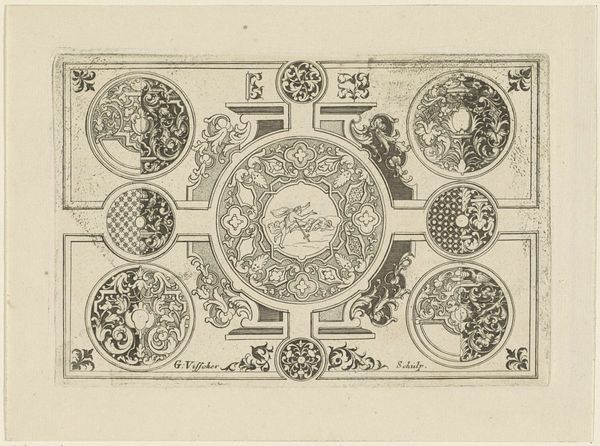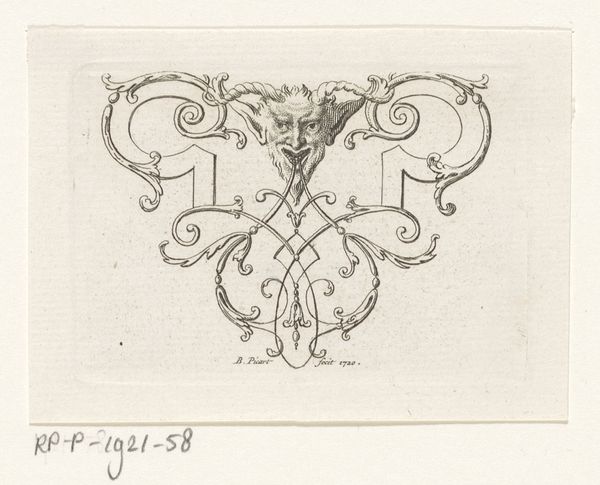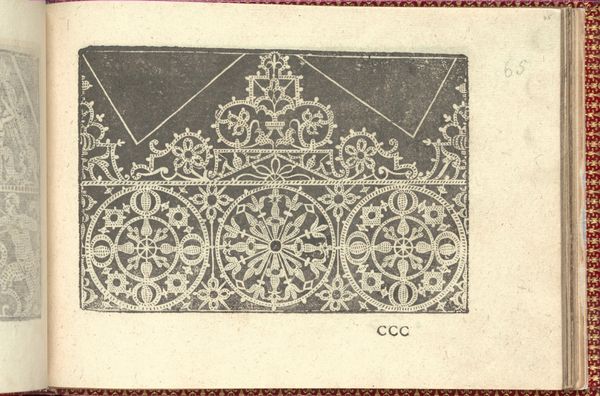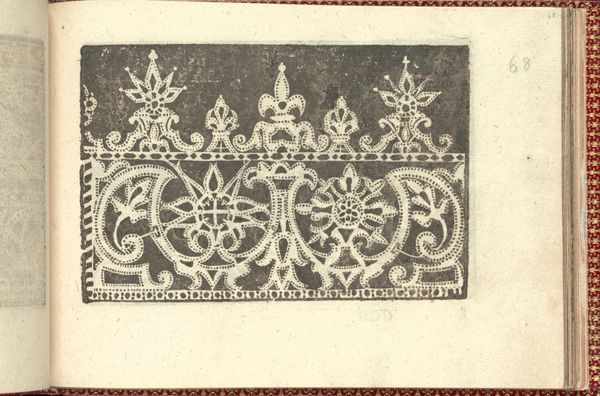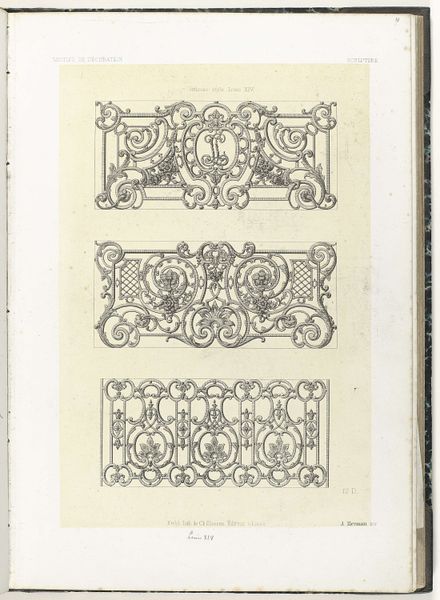
print, engraving
#
baroque
#
pen drawing
# print
#
form
#
geometric
#
line
#
decorative-art
#
engraving
Dimensions: height 28 mm, width 67 mm
Copyright: Rijks Museum: Open Domain
Editor: Here we have a piece titled "Rectangle with Woven Pattern and Mask," made after 1703 by an anonymous artist. It's an engraving housed in the Rijksmuseum. It feels very ornamental to me, like a detail from a larger architectural design. How would you interpret this work? Curator: Well, focusing on the material conditions of its making, consider the social role of prints at this time. These engravings facilitated the dissemination of design ideas across workshops and regions. How does the choice of line and form affect the reproduction process? Editor: So, the geometric design helps with reproduction? Is it more economical, using basic shapes instead of a fancy design? Curator: Exactly. The relatively simple geometric structure combined with the intricate details suggest a focus on efficient and widespread production. Think about the paper itself: its availability, cost, and how that influences the scale and detail of the engraving. Also, who was commissioning such works? And for what purposes? Editor: I guess it was intended to provide patterns for other artisans to replicate. Sort of like a DIY guide for the Baroque period? Curator: Precisely! These weren't high art objects necessarily, but functional items driving aesthetic trends through skilled labour and material circulation. The mask, set against geometric abstraction, invites further thinking on the dynamic interrelationship between decoration and industry. This challenges the traditional division between artists, artisans, patrons and consumers. Do you agree? Editor: I do, it's fascinating how looking at the materials and processes opens up a completely different perspective. I'd initially overlooked the practical aspect entirely. Curator: By understanding the material conditions, we move away from merely appreciating its aesthetic value towards recognizing the social and economic forces at play in its creation. Editor: Definitely, I'll remember to think about production and consumption next time! Thanks!
Comments
No comments
Be the first to comment and join the conversation on the ultimate creative platform.
